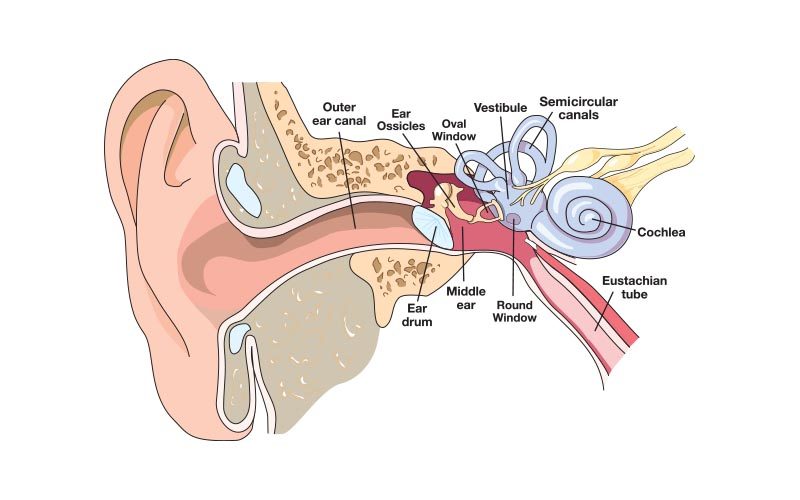From simple cases of swimmer’s ear to the serious and sometimes lasting damage of barotrauma, divers are vulnerable to ear problems. The delicate mechanisms that govern our hearing and balance are not designed for the rapid pressure changes that result from diving.

Fortunately, ear injuries are preventable.
Your middle ears are dead air spaces, connected to the outer world only by the Eustachian tubes running to the back of your throat.
If you fail to increase the pressure in your middle ears to match the pressure in your outer and inner ears, the result is painful middle ear barotrauma, the most common pressure-related ear injury.
The key to safe equalizing is opening the normally closed Eustachian tubes. Each has a kind of one-way valve at its lower end called the “Eustachian cushion,” which prevents contaminants in your nose from migrating up to your middle ears. Opening the tubes, to allow higher-pressure air from your throat to enter your middle ears, normally requires a conscious act. Swallowing usually does it.
You equalize your ears many times a day without realizing it, by swallowing. The tissues of your middle ear constantly absorb oxygen, lowering the air pressure in those spaces. When you swallow, your soft palate muscles pull your Eustachian tubes open, allowing air to rush from your throat to your middle ears and equalize the pressure. That’s the faint “pop” or “click” you hear about every other swallow.
Scuba diving, however, subjects this equalization system to much greater and faster pressure changes than it’s designed to handle. You need to give it help.
Why You Must Equalize
If you dive without equalizing your ears, you can experience painful and damaging middle ear barotrauma. Step-by-step, here’s what happens when you DON’T equalize:
| FEET | EFFECT |
| 1 | At one foot below the surface water pressure against the outside of your eardrums is 0.445 psi more than on the surface air pressure on the inside. They flex inward and you feel pressure in your ears. |
| 2 | |
| 3 | |
| 4 | At four feet the pressure difference increases to 1.78 psi. Your eardrums bulge into your middle ears, so do the round windows and oval windows between your middle and inner ears. Nerve endings in your eardrum are stretched. You begin to feel pain. |
| 5 | |
| 6 | At six feet the pressure difference is 2.67 psi. Your eardrum stretches further. Its tissues begin to tear, causing inflammation that will last up to a week. Small blood vessels in your eardrums may expand or break, causing bruising which will last up to three weeks. Your Eustachian tubes are now locked shut by pressure, making equalization impossible. Pain increases. |
| 7 | |
| 8 | At eight feet the pressure difference is 3.56 psi. If you are lucky, blood and mucus is sucked from surrounding tissues and begins to fill your middle ear. This is called middle ear barotrauma. Fluid, not air, now equalizes pressure on your eardrums. Pain subsides, replaced by a feeling of fullness in your ears which will remain for a week or more until the fluid is reabsorbed by your body. |
| 9 | |
| 10 | At 10 feet the pressure difference is 4.45 psi. If you aren’t so lucky—if your descent is very fast, for example—your eardrums may break. Water will flood your middle ear. The sudden sensation of cold against your balance mechanism (vestibular canals) may cause vertigo, especially if only one eardrum breaks. Suddenly, the world is spinning around you, though the sensation will probably stop when your body warms up the water in your middle ear. Or, if you try to equalize by blowing hard and long against pinched nostrils, you may rupture the round window membrane between your middle and inner ears. This is called inner ear barotrauma. Perilymph fluid drains from the cochlea into the middle ear. Temporary or sometimes permanent, hearing loss may result. |
